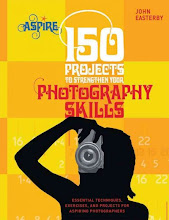Long exposures mean the possibility of more camera shake, so a tripod is absolutely essential. Rule of thumb: if the shutter speed is less than the focal length (i.e. 200mm) of the lens, then you need a tripod. Generally, this will avoid camera shake. There are other considerations, however. Wind, movement from your hand when pressing the shutter release, bumping the camera or tripod...etc. all will contribute to a blurry picture when taking long exposures.
The benefits of long exposures: 1. Greater depth of field as you can use a higher f-stop (smaller diameter). 2. Blurring motion, including water, people, traffic lights, etc.
For Project 11, I chose a water fountain at Lucas Digital Arts since it is a cloudy and windy day. I used a tripod, camera shutter release cable and a 6x neutral density filter. the lighting was atrocious and changed so rapidly, so I wouldn't want to put these in my portfolio)
Here are the results (click on image for larger view):



